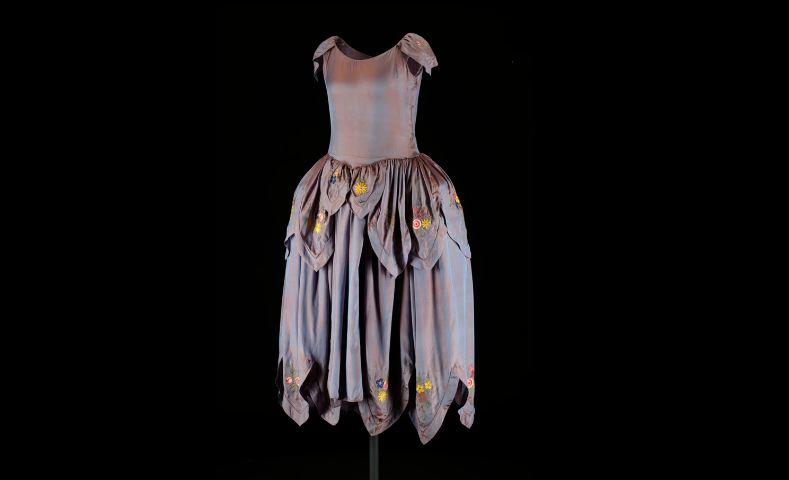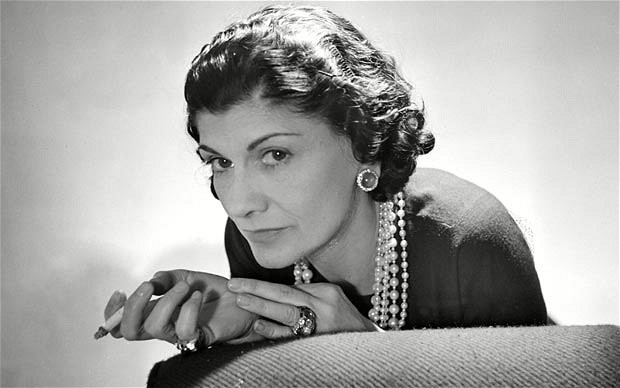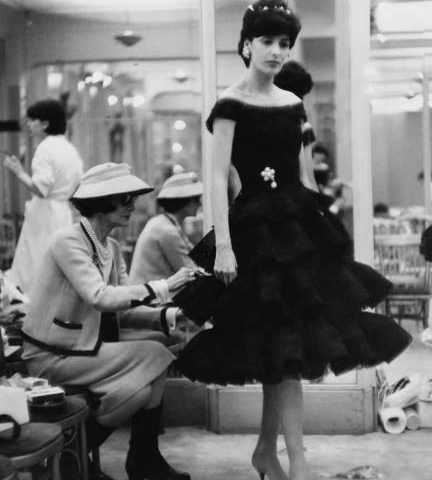Haute couture fashion was the only reality for the wealthy at the start of the last century. The fusion of culture, nature and the imagination of the couturier allowed the client to enter a world of dreams. Paired with the skills of the craftspeople such as the lace makers, weavers, embroiderers, textile painters and seamstresses, the dream became a reality.
Related reading: Part1: 1900’s
Unlike ready-to-wear which is about predicting the future, couture while expensive is an altogether more relaxed affair. The point of haute couture fashion is that it symbolizes the present for future generations to learn about the past.
Clothing produced for the haute couture market reflected the context of what was occurring in the world at the time of making. The types of materials used, the techniques employed for embellishing the fabrics right down to a reflection of the period’s art movements and especially in the 1920’s the emancipation of women after the war.
The pieces communicated to a particular society, such as the lower classes, how the society that wore the clothes wanted to be perceived. This idea particularly resonates in the haute couture fashion industry of the 1920’s.
Part 2:
The Roaring 20’s
Poiret, one of the most iconic designers at the turn of the 20th century was born before his time. He set the tone for the period that was to be known as the roaring twenties.
After the devastation of the great war in 1914, the 20’s was an era of decadence, exuberance and celebration. The constraints of the corset were dismissed by the young along with tiny waists, layers of lace and petticoats and the heaving bosoms symptomatic of the Edwardian period. Replaced by a somewhat boyish, cylindrical and less restrictive silhouette with its dropped waist and more fluid shaping. The look was a homage to Poiret’s pioneering vision of liberty and comfort. Shoulders were revealed through the wearing of spaghetti strapped dresses and hemlines rose exponentially, a firm declaration that the shoulders and ankles had become the new erogenous zones.
The Great Jeanne Lanvin
The most famous couturiers of the era were Jeanne Lanvin and Chanel.
Lanvin was one of the greatest couturiers of the 20th century. Her signature design which was first offered in the early 1900’s was the Robe de Style whose silhouette, dropped waist with a full skirt was a precursor to her 20’s flapper style dresses. They were produced every season for her clients but reimagined in different types of fabric and decoration.

In the 1920’s the skirt of the Robe de Style became shorter and less full, more tubular in keeping with the modern flapper silhouette.
Cleverly, Lanvin created an illusion of narrowness by using fine, sheer fabrics which were then layered over slimmer, opaque underskirts. With her interest in religion, the Italian Renaissance, the Middle Ages, India, China and Japan, she developed beautifully intricate textile techniques that reflected all that inspired her.
Renowned for exquisite embellishment, her materials of choice included square, oval, diamond and rounded sequins with crimped edges and a multitude of textures. It wasn’t unusual for her to include all the varieties in a single item. Her embroidery was inspired by antique and oriental textiles and she added weight to her silk satins by using the quilting technique, Trapunto to great effect. In particular, her satin columns which feature trapunto accents are so contemporary it’s impossible to tell that they were designed in the 20’s.
Lanvin’s wealthy clients were dressed by her throughout their lifespan, from birth to middle age through to the twilight years.
Her clothes, like most couture, were timeless.
The One and Only Gabrielle “Coco” Chanel
Gabrielle Bonheur “Coco” Chanel or as we know her Coco Chanel, opened her first couture atelier in Paris in 1918. With an attention to detail that was second to none Chanel’s clothes stood out from the crowd.
From her humble beginnings when she used jersey because it was inexpensive, her couture line in the 20’s used the best fabrics. Crepe de chine, wool crepe and the wool jersey were used for her sporty daywear ensembles.

The cuts were relatively simple with a tie at the neck or a tiered, graduated skirt. Her finishing, however, was superlative in its execution. All of her interior seams were over-stitched by hand while her finer fabrics, such as the silks and chiffons picot-trimmed.
She was also obsessed, like Balenciaga, with fitting the perfect sleeve into her garments and would spend hours until she was satisfied. When she used printed chiffon featuring florals she would cut out the individual flower heads and either appliques them or picot trim the edges, layer them and turn them into three-dimensional corsages which would then be attached to a matching jacket or coat.
Chanel’s inspiration for her designs came directly from her own wardrobe. Heavily influenced by her lover, the Duke of Westminster’s wardrobe which comprised of hunting, shooting, and fishing attire; waistcoats, cardigans, tweeds and cuff-linked shirts. The details were then appropriated and refined into simple, elegantly feminine styles for herself and her growing clientele.
Chanel wasn’t in a position that necessitated the feting of wealthy clients as she was growing independently wealthy and also being supported by her wealthy lover. In addition to this, she was the epitome of her brand and lived the lifestyle of her clients while socializing with them. Something that is so important nowadays when brand building.
Nonetheless, the wealthy clients wore her couture pieces. One such client was Baba d’Erlanger (1901-45) an ‘It girl’ of the 1920’s. She grew up in the old London home of Lord Byron and was dressed in gold by her Avant-garde mother who preferred to style herself in medieval-inspired fashions or a nun’s habit in white.
This set the tone for her very individual style and taste in clothes. Her fashion choices were severe with her preference for a monochrome palette and minimal outfits for day to emphasize her slender frame. Baba was a fan of Chanel couture because she was the epitome of the ‘’Garconne” look of the twenties.
After setting up her own factory on the outskirts of Paris, in Asnieres-Sur-Seine, Chanel was able to produce machine-knitted jerseys and silks for her famous two-piece suits. By the mid-1920’s she opened her own workshop where she employed aristocratic Russian immigrants to produce Russian or Egyptian-style embroidery on her designs. Her evening dresses of this period combined machine-knitting with metallic lace, beading and embroidery. The combination of all of these techniques created pieces that resembled Asian lacquered screens which Chanel collected and loved.
Laces such as heavy guipures in ivory and black as well as pastel shades were favourite textiles and these were used on slender flapper style dresses with dropped waistlines in the 20’s to full-skirted dance dresses in the 50’s.

In 1926 Chanel created her most famous item of clothing, the LBD (little black dress) which while becoming a staple in many women’s wardrobes she provided exclusive LBD’s to her couture customers. These special items were cleverly constructed and surface texture was created by the clever use of embroidery, applique, beadwork, sequins and lace.
A decade ago, the house of Chanel made a decision that would ensure that the craft of Haute Couture would continue in the modern era. It bought six of the most revered couture ateliers in the world including Maison Michel (milliners), Massaro (shoemakers), Goossens (goldsmiths), Lemarie (feather specialists), Guillet (fabric flowers), Desrues (costume jewelers) and last but not least the renowned House of Lesage, the master embroiderers that all the famous couturiers have used.
The decadence of the twenties took its lead from the work developed by ‘the father of Haute Couture’ Poiret. However, this exuberance was to be short-lived due to the impending economic global recession of the thirties.
In spite of this, the early ‘founders’ of haute couture fashion had set the tone for the fundamental ethos of couture as we know it today.
Part 3 to follow soon…
If you have any questions about this article or general feedback then please do not hesitate to let us know in the comments below.



